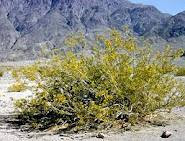ICELAND MOSS, CETRARIA ISLANDICA
Iceland moss is a lichen and not a moss, and grows prolifically in Iceland , hence the name. It is in the Parmeliaceae family of plants and grows to a mere four inches high but has a spread of around two feet.
It can be found in the Arctic , in Britain , particularly in Scotland , Northern England and North Wales , in North America and south western Ireland . It can be almost any colour in the spectrum from light grey through green to dark brown. Another name for Iceland moss is eryngo-leaved liverwort,.
 In traditional medicine it has been used for pulmonary complaints, peptic and duodenal ulcers and gastric problems. It has a soothing action on the mucous membranes and was used for coughs, bronchitis and other chest complaints as well as for food poisoning and T.B. It is also used to promote appetite. It is said to be good to stop vomiting and feelings of nausea too.
In traditional medicine it has been used for pulmonary complaints, peptic and duodenal ulcers and gastric problems. It has a soothing action on the mucous membranes and was used for coughs, bronchitis and other chest complaints as well as for food poisoning and T.B. It is also used to promote appetite. It is said to be good to stop vomiting and feelings of nausea too. Today it can be found as an ingredient in toothpaste, and as a baking ingredient. It can be dried and ground and used with wheat flour to make bread. It can also be used to make confectionary, in which case it is made into a jelly and combined with lemon, sugar, chocolate, or almonds. In the 19th century it was drunk with cocoa sweetened with sugar for a really wholesome drink in cases of colds and flu.
The whole herb can be used although it has some lichen acids in it which have to be leached out before using internally. This is a tedious process, involving pounding the dried herb to a powder and soaking it in lye or filtering it through ash. Alternatively a jelly can be made from the whole plant by boiling it in water and changing and discarding the water twice- much easier to do. This process removes the bitterness of the plant.
In traditional medicine systems in Europe Iceland moss is used to treat cancer and as an antibiotic, demulcent (soother).and tonic for the stomach. It is also believed to be a galactagogue, which means that it increases the flow of breast milk in breast-feeding mothers. Externally it is used to treat excessive vaginal discharge, boils, impetigo and to heal stubborn wounds.
 The German Commission E has approved its use for loss of appetite, inflammation of the mouth and throat, coughs, bronchitis and dyspepsia. The whole plant gives a brown dye, and the antibiotic principle from the plant is used in disinfectant. The plant has potent antioxidant properties and has been found to boost the immune system. A new polysaccharide was found in the plant in 1994 which showed “immunostimulating activity” in vitro (Planta Medica 1994 Vol. 60 (6) pp 527-8 “Immunologically active polysaccharide from Cetraria islandica” Ingolfsdottir, K. et al)
The German Commission E has approved its use for loss of appetite, inflammation of the mouth and throat, coughs, bronchitis and dyspepsia. The whole plant gives a brown dye, and the antibiotic principle from the plant is used in disinfectant. The plant has potent antioxidant properties and has been found to boost the immune system. A new polysaccharide was found in the plant in 1994 which showed “immunostimulating activity” in vitro (Planta Medica 1994 Vol. 60 (6) pp 527-8 “Immunologically active polysaccharide from Cetraria islandica” Ingolfsdottir, K. et al) It has been deemed safe for use because it has been traditionally used in medicine for centuries. Research still needs to be done to allay criticisms of the German Commission E’s decision




















































